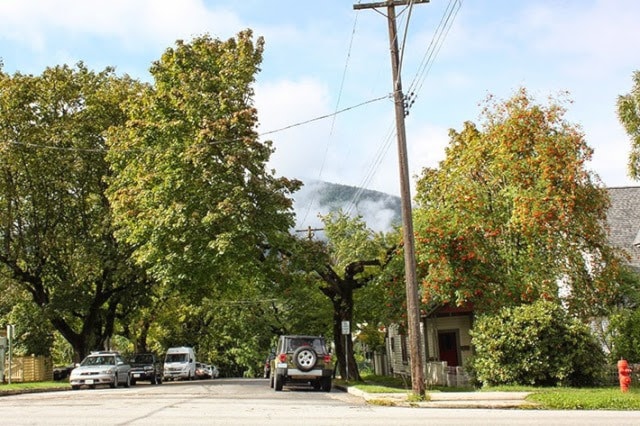Nelson Hydro’s tree-pruning program will resume within city limits following a two-week hiatus but with greater emphasis on consulting homeowners before contractors begin removing limbs that encroach on power lines.
It comes after a meeting between city council, Nelson Hydro, the city arborist, public works, and contractor who has been carrying out the work, in response to complaints from the public that the trimming has been too drastic.
Over the summer, a three-meter swath has been cut around the utility’s lines — up to five meters around higher-voltage ones — to improve safety and reliability, but it has left many Y-shaped trees.
Based on negative feedback to date, council agreed this month to put further trimming on hold until it could meet with the contractor to address the complaints. (However, the work continued around schools and in Nelson Hydro’s service area that is outside the city.)
Councillor Deb Kozak said the meeting went well and she now feels “far more comfortable” with the plan. “I think there was a willingness to work together. I was very impressed by how Nelson Hydro and public works is proposing to look after our urban forests.”
Kozak said crews would pay more attention to ensuring residents are notified of their intentions before they start cutting: “Sometimes that step was missed, so council asked that neighbourhoods be informed of what trees were being pruned or removed. I think Nelson Hydro heard clearly the desires of council and the community. Nobody wants to damage our trees.”
A summary of the discussion in a staff report acknowledged directional pruning minimizes the risk of fire or electrical hazards but “may result in an uneven shape.” “In general, trees growing near power lines will never have the opportunity to exist with a natural shape,” it said.
Although directionally pruned trees can split under snow loads, the work has been done to avoid that. However, some heavily-pruned trees may slowly decline and face being removed and replaced with new trees in different locations.
Concerns were also raised about dead limbs being left on trees. A public works review of trees trimmed this summer found a number that could benefit from further pruning, as well as some that should be removed. Public works will do the work at a cost of $77,000 although it’s unclear how it will be paid for.
Twenty-five trees in Uphill and Fairview have been identified for removal under criteria laid out in the city’s tree management plan, adopted in 2012.
“Although application of this methodology is believed to be the best approach, it is acknowledged that the removal of trees can be contentious,” the staff report says.
Another concern was incomplete clean-up by crews, who are required to tidy branches and sawdust after pruning. Residents can report any messes left behind.
Tree trimming specs
These are the minimum clearance standards that Nelson Hydro’s contractor has been operating under with its tree trimming program:
• Transmission voltage (60,000 volts): 5 meters
• Distribution primary voltage (25,000 volts): 3 meters
• Distribution secondary voltage (750 volts or less): 1 meter
• Communication lines (Telus, Shaw, etc.): 1 meter
